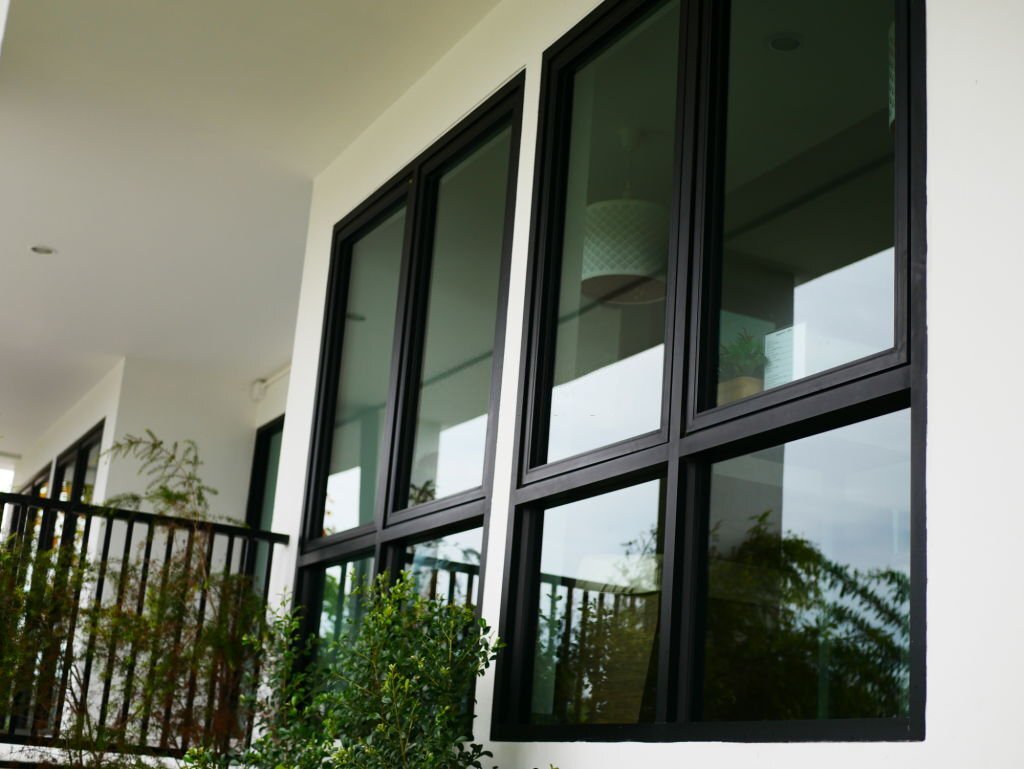How Residential Home Window Tinting Enhances Your Home's Power Effectiveness
Residential home window tinting offers a compelling service for house owners looking for to boost power efficiency within their living spaces. By applying specialized films to windows, it efficiently minimizes warmth transfer, therefore maintaining interior temperature levels and minimizing the requirement for extreme heating or air conditioning.
Comprehending Home Window Tinting
Recognizing home window tinting is important for property owners seeking to enhance both comfort and energy efficiency in their living spaces. Residential Window Tint. Window tinting entails the application of a slim movie to the inside or outside surface of glass windows. This film can considerably modulate the amount of sunlight and warmth that gets in a home, hence affecting interior environment problems
There are numerous kinds of window tinting films offered, each with distinct residential or commercial properties. The effectiveness of home window tinting is frequently gauged by its Visible Light Transmission (VLT) portion, which indicates exactly how much light can pass through the movie.
Benefits of Power Efficiency
Home window tinting not only improves aesthetic appeals but additionally plays a significant duty in improving power efficiency within household areas. By lowering heat transfer via windows, tinted movies create an extra stable interior environment, which can cause significant reductions in power consumption for heating & cooling. This energy efficiency converts right into lower utility costs, supplying property owners with considerable long-term cost savings.

In addition, home window tinting improves the convenience of living areas. By lessening glare and blocking unsafe UV rays, colored windows create a more enjoyable environment, which can lead to boosted health for residents. The security against UV rays also assists preserve furnishings and flooring from fading, adding to the durability of house products.
Just How Tinting Works
Tinting movies operate through a mix of advanced materials and technologies made to manage the quantity of solar power going into a home. Primarily made up of polyester, these movies commonly incorporate metallic or ceramic particles that show and absorb heat. This double capacity allows them to dramatically decrease the infiltration of ultraviolet (UV) rays and infrared radiation while permitting noticeable light to pass through.
The efficiency of home window tinting is measured by its solar warm gain coefficient (SHGC), which indicates just how much solar energy is transmitted via the home window. Reduced SHGC values are more suitable as they denote better warmth denial. Furthermore, window tints can feature a variety of tones, enabling house owners to customize their visual preferences while improving power effectiveness.
Furthermore, these films work as an obstacle, preventing warm loss during chillier months by showing interior warmth back into the home. This thermal insulation impact matches the air conditioning benefits obtained during warmer months, adding to a balanced interior environment year-round. By handling solar power efficiently, domestic home window tinting not only improves convenience but also plays an important function in decreasing energy consumption and lowering energy costs.
Picking the Right Color

There are various sorts of home window films offered, consisting of dyed, metalized, and ceramic. Dyed movies are cost-effective however might have limited durability. Metalized films supply better warm denial but can interfere with digital signals. Ceramic movies offer their website exceptional warmth control without compromising exposure and are very sturdy, making them a popular choice.
Visible light transmission (VLT) is another important aspect, as it suggests the quantity of all-natural light that can go through the colored glass. House owners need to pick a color with a VLT that enhances their lights choices while still giving adequate glare reduction.
In addition, assessing the solar warm gain coefficient (SHGC) can assist identify just how well a color can block heat from sunshine. A reduced SHGC shows much better warm control, eventually improving power performance.
Installment and Maintenance Tips
Correct setup and upkeep are vital elements in making the most of the advantages of residential window tinting. Specialists also utilize specialized methods and devices, which can enhance the sturdiness and performance of the tint.
Complying with installment, upkeep is vital to lengthen the life of the home window film. It is suggested to wait at the very least one month prior to cleansing the tinted windows to allow the sticky to heal totally. When cleaning, utilize a soft fabric and a mild, ammonia-free cleaner to stay clear of harming the movie. Avoid rough materials that might scratch the surface area.
Resolving these problems immediately can avoid further damages and preserve energy performance. By sticking to these setup and upkeep pointers, house owners can ensure their home window tinting proceeds to provide substantial power cost savings and convenience for years to come.
Final Thought
Finally, residential home window tinting acts as a reliable option for enhancing power effectiveness within homes. By reducing warmth transfer and blocking unsafe UV rays, window movies add to lower energy consumption and enhanced indoor comfort. The selection of proper tinting materials, together with proper setup and upkeep, additionally optimizes these benefits. Eventually, home window tinting represents a lasting find out this here investment that not just lowers energy costs however also promotes a comfy living atmosphere throughout the year.
Home window tinting involves the application of a thin film to the inside or outside surface area of glass windows. By minimizing warmth transfer via windows, tinted movies develop an extra stable indoor environment, which can lead to substantial reductions in energy consumption for home heating and air conditioning.The effectiveness of window tinting is measured by its solar warm gain coefficient (SHGC), which shows how much solar energy is transferred via the home window. By managing solar energy efficiently, property home window tinting not just boosts comfort but likewise plays an essential duty in reducing power consumption and lowering utility costs.
By reducing heat transfer and blocking dangerous UV rays, home window movies add to decrease power intake and boosted interior convenience.